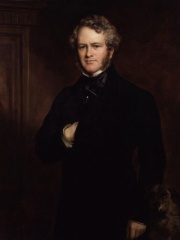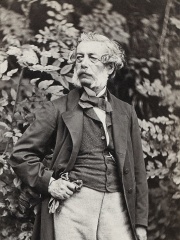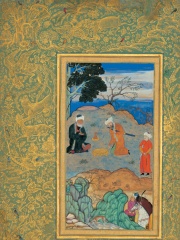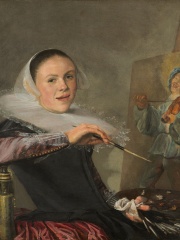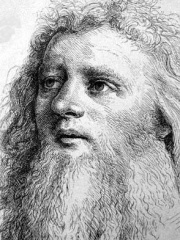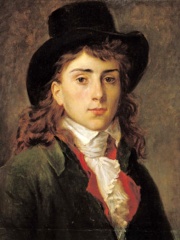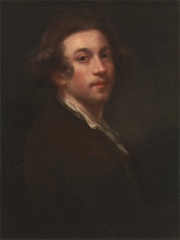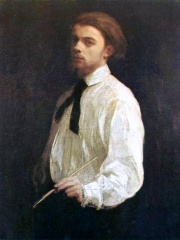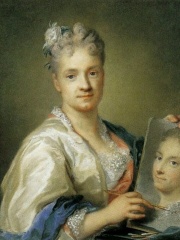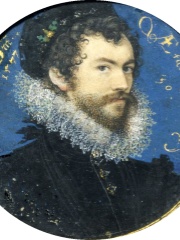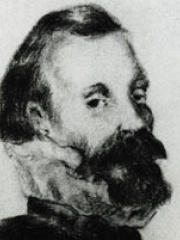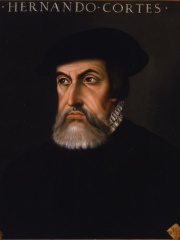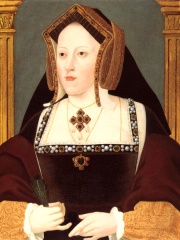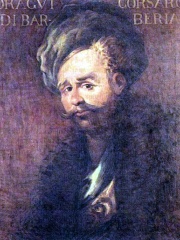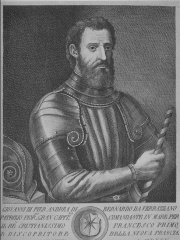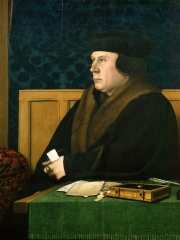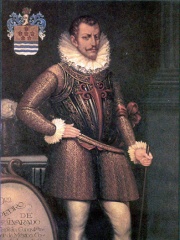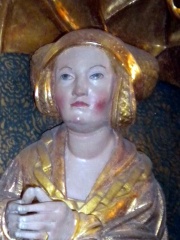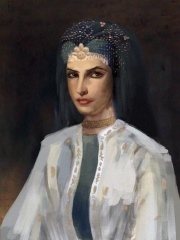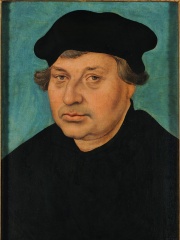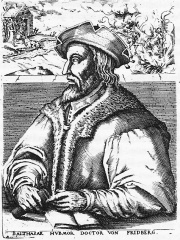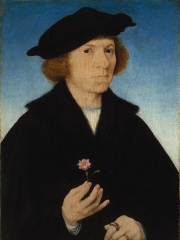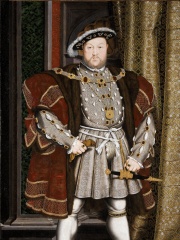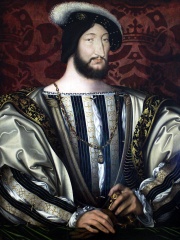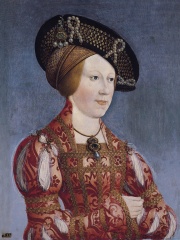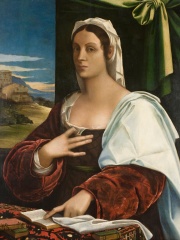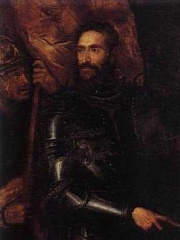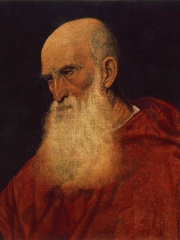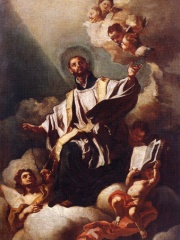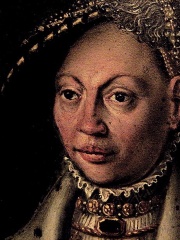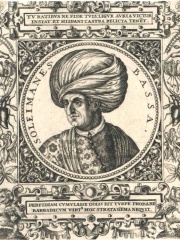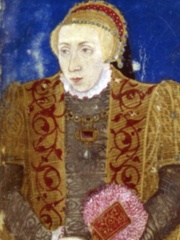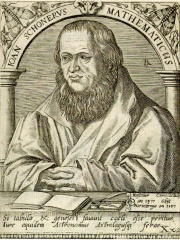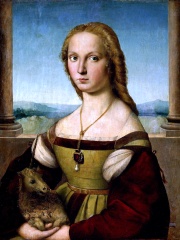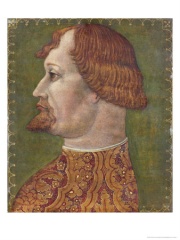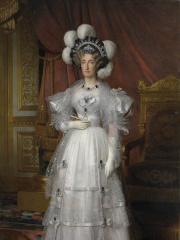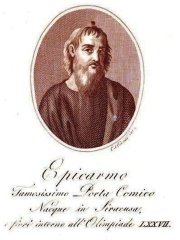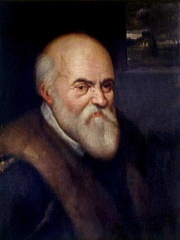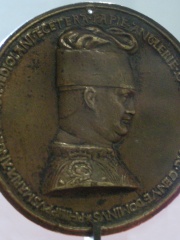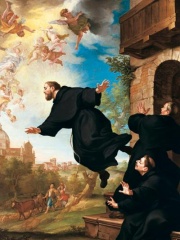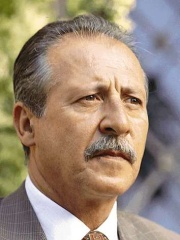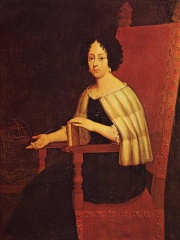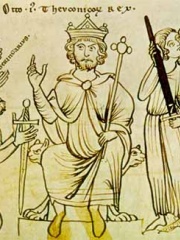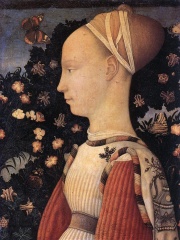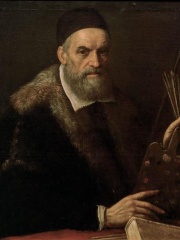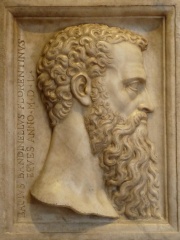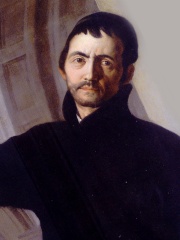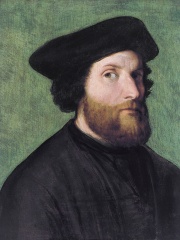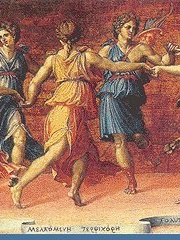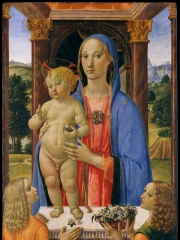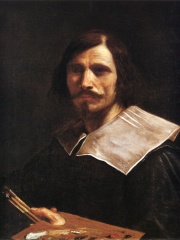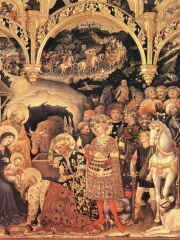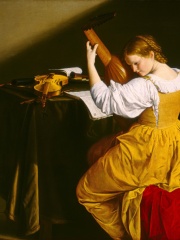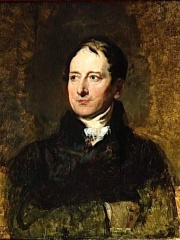PAINTER
Sebastiano del Piombo
1485 - 1547
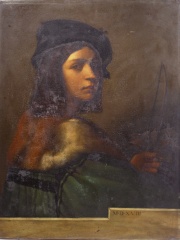
 Sebastiano del Piombo
Sebastiano del Piombo
Sebastiano del Piombo (Italian: [sebaˈstjaːno del ˈpjombo]; c. 1485 – 21 June 1547) was an Italian painter of the High Renaissance and early Mannerist periods, famous as the only major artist of the period to combine the colouring of the Venetian school in which he was trained with the monumental forms of the Roman school. He belongs both to the painting school of his native city, Venice, where he made significant contributions before he left for Rome in 1511, and that of Rome, where he stayed for the rest of his life, and whose style he thoroughly adopted. Born Sebastiano Luciani, after coming to Rome he became known as Sebastiano Veneziano or Viniziano ("Sebastian the Venetian"), until in 1531 he became the Keeper of the Seal to the Papacy, and so got the nickname del Piombo ("of the Lead") thereafter, from his new job title of piombatore. Friends like Michelangelo and Ariosto called him Fra Bastiano ("Brother Bastian"). Read more on Wikipedia
His biography is available in 35 different languages on Wikipedia. Sebastiano del Piombo is the 258th most popular painter (down from 241st in 2024), the 881st most popular biography from Italy (down from 804th in 2019) and the 69th most popular Italian Painter.
Sebastiano del Piombo is most famous for his painting of the Transfiguration, which is now in the National Gallery in London.
Memorability Metrics
Page views of Sebastiano del Piombo by language
Among PAINTERS
Among painters, Sebastiano del Piombo ranks 258 out of 2,023. Before him are Edwin Landseer, Franz Xaver Winterhalter, Kamāl ud-Dīn Behzād, Judith Leyster, István Sándorfi, and Hans Holbein the Elder. After him are Antoine-Jean Gros, Joshua Reynolds, Henri Fantin-Latour, Rosalba Carriera, Nicholas Hilliard, and Hendrick Avercamp.
Most Popular Painters in Wikipedia
Go to all RankingsEdwin Landseer
1802 - 1873
HPI: 70.67
Rank: 252
Franz Xaver Winterhalter
1805 - 1873
HPI: 70.65
Rank: 253
Kamāl ud-Dīn Behzād
1450 - 1535
HPI: 70.60
Rank: 254
Judith Leyster
1609 - 1660
HPI: 70.60
Rank: 255
István Sándorfi
1948 - 2007
HPI: 70.58
Rank: 256
Hans Holbein the Elder
1465 - 1524
HPI: 70.57
Rank: 257
Sebastiano del Piombo
1485 - 1547
HPI: 70.53
Rank: 258
Antoine-Jean Gros
1771 - 1835
HPI: 70.49
Rank: 259
Joshua Reynolds
1723 - 1792
HPI: 70.49
Rank: 260
Henri Fantin-Latour
1836 - 1904
HPI: 70.49
Rank: 261
Rosalba Carriera
1673 - 1757
HPI: 70.47
Rank: 262
Nicholas Hilliard
1547 - 1619
HPI: 70.46
Rank: 263
Hendrick Avercamp
1585 - 1634
HPI: 70.45
Rank: 264
Contemporaries
Among people born in 1485, Sebastiano del Piombo ranks 7. Before him are Hernán Cortés, Catherine of Aragon, Dragut, Giovanni da Verrazzano, Thomas Cromwell, and Pedro de Alvarado. After him are Elizabeth of Denmark, Electress of Brandenburg, Clément Janequin, Sayyida al Hurra, Johannes Bugenhagen, Balthasar Hubmaier, and Joos van Cleve. Among people deceased in 1547, Sebastiano del Piombo ranks 7. Before him are Henry VIII of England, Hernán Cortés, Francis I of France, Anne of Bohemia and Hungary, Vittoria Colonna, and Pier Luigi Farnese, Duke of Parma. After him are Pietro Bembo, Saint Cajetan, Dorothea of Denmark, Duchess of Prussia, Hadım Suleiman Pasha, Marie of Luxembourg, Countess of Vendôme, and Johannes Schöner.
Others Born in 1485
Go to all RankingsHernán Cortés
EXPLORER
1485 - 1547
HPI: 85.59
Rank: 1
Catherine of Aragon
RELIGIOUS FIGURE
1485 - 1536
HPI: 81.80
Rank: 2
Dragut
MILITARY PERSONNEL
1485 - 1565
HPI: 73.33
Rank: 3
Giovanni da Verrazzano
EXPLORER
1485 - 1528
HPI: 71.94
Rank: 4
Thomas Cromwell
PUBLIC WORKER
1485 - 1540
HPI: 71.27
Rank: 5
Pedro de Alvarado
MILITARY PERSONNEL
1485 - 1541
HPI: 70.84
Rank: 6
Sebastiano del Piombo
PAINTER
1485 - 1547
HPI: 70.53
Rank: 7
Elizabeth of Denmark, Electress of Brandenburg
COMPANION
1485 - 1555
HPI: 66.76
Rank: 8
Clément Janequin
COMPOSER
1485 - 1558
HPI: 66.63
Rank: 9
Sayyida al Hurra
POLITICIAN
1485 - 1542
HPI: 64.88
Rank: 10
Johannes Bugenhagen
PHILOSOPHER
1485 - 1558
HPI: 64.57
Rank: 11
Balthasar Hubmaier
RELIGIOUS FIGURE
1485 - 1528
HPI: 64.51
Rank: 12
Joos van Cleve
PAINTER
1485 - 1540
HPI: 64.43
Rank: 13
Others Deceased in 1547
Go to all RankingsHenry VIII of England
NOBLEMAN
1491 - 1547
HPI: 94.65
Rank: 1
Hernán Cortés
EXPLORER
1485 - 1547
HPI: 85.59
Rank: 2
Francis I of France
POLITICIAN
1494 - 1547
HPI: 82.84
Rank: 3
Anne of Bohemia and Hungary
COMPANION
1503 - 1547
HPI: 76.19
Rank: 4
Vittoria Colonna
WRITER
1490 - 1547
HPI: 70.76
Rank: 5
Pier Luigi Farnese, Duke of Parma
POLITICIAN
1503 - 1547
HPI: 70.64
Rank: 6
Sebastiano del Piombo
PAINTER
1485 - 1547
HPI: 70.53
Rank: 7
Pietro Bembo
WRITER
1470 - 1547
HPI: 70.40
Rank: 8
Saint Cajetan
RELIGIOUS FIGURE
1480 - 1547
HPI: 68.72
Rank: 9
Dorothea of Denmark, Duchess of Prussia
POLITICIAN
1504 - 1547
HPI: 65.51
Rank: 10
Hadım Suleiman Pasha
POLITICIAN
1467 - 1547
HPI: 64.96
Rank: 11
Marie of Luxembourg, Countess of Vendôme
COMPANION
1472 - 1547
HPI: 63.64
Rank: 12
Johannes Schöner
ASTRONOMER
1477 - 1547
HPI: 62.72
Rank: 13
In Italy
Among people born in Italy, Sebastiano del Piombo ranks 881 out of 5,161. Before him are Giulia Farnese (1474), Gian Galeazzo Visconti (1351), Phalaris (-700), Maria Amalia of Naples and Sicily (1782), Epicharmus of Kos (-524), and Ulisse Aldrovandi (1522). After him are Filippo Maria Visconti (1392), Joseph of Cupertino (1603), Paolo Borsellino (1940), Elena Cornaro Piscopia (1646), Rosalba Carriera (1673), and Berengar II of Italy (900).
Others born in Italy
Go to all RankingsGiulia Farnese
RELIGIOUS FIGURE
1474 - 1524
HPI: 70.60
Rank: 875
Gian Galeazzo Visconti
POLITICIAN
1351 - 1402
HPI: 70.57
Rank: 876
Phalaris
POLITICIAN
700 BC - 600 BC
HPI: 70.56
Rank: 877
Maria Amalia of Naples and Sicily
POLITICIAN
1782 - 1866
HPI: 70.55
Rank: 878
Epicharmus of Kos
WRITER
524 BC - 435 BC
HPI: 70.55
Rank: 879
Ulisse Aldrovandi
BIOLOGIST
1522 - 1605
HPI: 70.54
Rank: 880
Sebastiano del Piombo
PAINTER
1485 - 1547
HPI: 70.53
Rank: 881
Filippo Maria Visconti
POLITICIAN
1392 - 1447
HPI: 70.53
Rank: 882
Joseph of Cupertino
RELIGIOUS FIGURE
1603 - 1663
HPI: 70.52
Rank: 883
Paolo Borsellino
JUDGE
1940 - 1992
HPI: 70.49
Rank: 884
Elena Cornaro Piscopia
PHILOSOPHER
1646 - 1684
HPI: 70.48
Rank: 885
Rosalba Carriera
PAINTER
1673 - 1757
HPI: 70.47
Rank: 886
Berengar II of Italy
POLITICIAN
900 - 966
HPI: 70.44
Rank: 887
Among PAINTERS In Italy
Among painters born in Italy, Sebastiano del Piombo ranks 69. Before him are Pisanello (1395), Jacopo Bassano (1510), Bartolommeo Bandinelli (1488), Andrea Pozzo (1642), Lorenzo Lotto (1480), and Baldassare Peruzzi (1481). After him are Rosalba Carriera (1673), Cosimo Rosselli (1439), Guercino (1591), Gentile da Fabriano (1370), Orazio Gentileschi (1563), and François Gérard (1770).
Pisanello
1395 - 1455
HPI: 71.06
Rank: 63
Jacopo Bassano
1510 - 1592
HPI: 70.92
Rank: 64
Bartolommeo Bandinelli
1488 - 1560
HPI: 70.88
Rank: 65
Andrea Pozzo
1642 - 1709
HPI: 70.88
Rank: 66
Lorenzo Lotto
1480 - 1556
HPI: 70.83
Rank: 67
Baldassare Peruzzi
1481 - 1536
HPI: 70.79
Rank: 68
Sebastiano del Piombo
1485 - 1547
HPI: 70.53
Rank: 69
Rosalba Carriera
1673 - 1757
HPI: 70.47
Rank: 70
Cosimo Rosselli
1439 - 1507
HPI: 70.41
Rank: 71
Guercino
1591 - 1666
HPI: 70.39
Rank: 72
Gentile da Fabriano
1370 - 1427
HPI: 70.35
Rank: 73
Orazio Gentileschi
1563 - 1639
HPI: 70.27
Rank: 74
François Gérard
1770 - 1837
HPI: 70.27
Rank: 75
